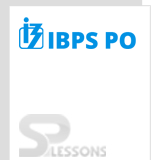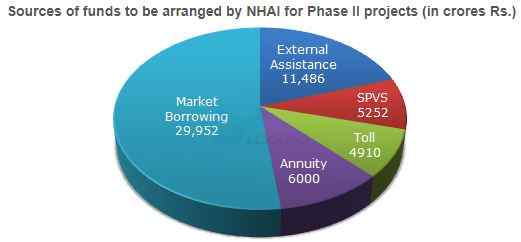 Introduction
Introduction
IBPS PO 2019 - Preliminary Examination, conducted in online Mode, has: a duration of 20 minutes for each section, a total of 100 questions, a maximum score of 100 marks, and, consists of 3 sections, namely - English Language, Quantitative Aptitude and Reasoning Ability.
 Pattern
Pattern
| SL | Name of Test | Number of Questions | Maximum Marks | Medium of Exam | Time allotted for each test (Separately timed) |
|---|---|---|---|---|---|
| 1 | English language | 30 | 30 | English | 20 minutes |
| 2 | Quantitative Aptitude | 35 | 35 | English and Hindi | 20 minutes |
| 3 | Reasoning ability | 35 | 35 | English and Hindi | 20 minutes |
| Total | 100 | 100 |
 Syllabus
Syllabus
| Topic | Number of Questions |
|---|---|
| Simplification | 1 - 5 |
| Profit & Loss | 1 - 3 |
| Mixtures & Allegations | 0 - 1 |
| Simple Interest & Compound Interest | 1 - 2 |
| Surds & Indices | 2 - 3 |
| Work & Time | 1 - 2 |
| Time & Distance | 1 - 3 |
| Mensuration – Cylinder, Cone, Sphere | 1 - 3 |
| Data Interpretation | 5 - 10 |
| Ratio & Proportion | 1 - 2 |
| Percentage | 1 - 2 |
| Number Systems | 0 - 1 |
| Sequence & Series | 1 - 5 |
| Permutation & Combination | 0 - 1 |
| Probability | 0 - 1 |
 Sample
Sample
1. Find the value of [latex]x[/latex]:
65% of 1260 + [latex]\sqrt{4489}[/latex] – 16 × 27 = [latex]x[/latex]
- A. 498
B. 454
C. 392
D. 377
E. 325
- A. 7284
B. 7462
C. 7262
D. 7414
E. None of these
- A. 2516
B. 2482
C. 2499
D. 16147
E. None of these
- A. 3079
B. 3097
C. 3090
D. 4010
E. None of these
- A. – 547
B. 2602
C. + 547
D. – 2602
E. None of these
1. A lost 25% by selling an article for rs.6900. What % will he gain by selling it for rs.10200?
- A. 8.25
B. 6.67
C. 10.86
D. 12.12
E. None of these
- A. Rs. 520
B. Rs. 650
C. Rs. 620
D. Rs. 550
E. None of these
- A. 8.33%
B. 6.67%
C. 12.25%
D. 6.33%
E. None of these
- A. 30%
B. 44%
C. 56%
D. 64%
E. None of these
- A. Rs. 180
B. Rs. 156
C. Rs. 64
D. Rs. 28
E. None of these
1. A milk vendor has 2 cans of milk. The first contains 25% water and the rest milk. The second contains 50% water. How much milk should he mix from each of the containers so as to get 12 litres of milk such that the ratio of water to milk is 3 : 5?
- A. 4 litres, 8 litres
B. 6 litres, 6 litres
C. 5 litres, 7 litres
D. 7 litres, 5 litres
- A. Rs. 169.50
B. Rs. 1700
C. Rs. 175.50
D. Rs. 180
- A. 18 liters
B. 24 liters
C. 32 liters
D. 42 liters
- A. 10
B. 20
C. 21
D. 25
- A. 400 kg
B. 560 kg
C. 600 kg
D. 640 kg
Simple Interest
1. A sum of money at simple interest amounts to Rs. 815 in 3 years and to Rs. 854 in 4 years. The sum is:
- A. Rs. 650
B. Rs. 690
C. Rs. 698
D. Rs. 700
- A. Rs 1680
B. Rs 9680
C. Rs 9272
D. Rs 2680
E. None of these
- A. 12%
B. 16%
C. 20%
D. 25%
E. None of these
- A. Rs. 16800
B. Rs. 28800
C. Rs. 24400
D. Rs. 18600
E. None of these
- A. Rs. 650
B. Rs. 975
C. Rs. 1250
D. Rs. 1500
E. None of these
- A. Rs. 189,325
B. Rs. 186,325
C. Rs. 389,325
D. Rs. 289,325
E. None of these
- A. Rs. 30000
B. Rs. 10000
C. Rs. 15000
D. Rs. 25000
E. None of these
- A. 16500
B. 15000
C. 15020
D. 16000
E. None of these
- A. Rs. 5,345
B. Rs. 5547
C. Rs. 5847
D. Rs. 5397
E. None of these
- A. Rs. 10960
B. Rs. 9500
C. Rs. 10500
D. Can't be determined
E. None of these
1. Find the value of:
[latex]{256}^{0.16}[/latex] x [latex]{256}^{0.09}[/latex] = ?
- A. 4
B. 16
C. 64
D. 256.25
- A. 2.29
B. 2.75
C. 4.25
D. 4.5
- A. 1.45
B. 1.88
C. 2.9
D. 3.7
- A. 25
B. 125
C. 625
D. 1625
- A. 0
B. 2
C. 4
D. 6
1. A, B and C can do a piece of work in 20, 30 and 60 days respectively. In how many days can A do the work if he is assisted by B and C on every third day?
- A. 12 days
B. 15 days
C. 16 days
D. 18 days
- A. 60, 180, 240
B. 90, 180, 120
C. 90, 180, 60
D. 90, 60, 180
E. None of these
- A. 5 days
B. 10 days
C. 8 days
D. 6 days
E. None of these
- A. 2 : 1
B. 1 : 2
C. 1 : 1
D. Can't be determined
E. None of these
- A. 10 days
B. 15 days
C. 25 days
D. 20 days
E. None of these
1. A train can travel 50% faster than a car. Both start from point A at the same time and reach point B 75 kms away from A at the same time. On the way, however, the train lost about 12.5 minutes while stopping at the stations. The speed of the car is:
- A. 100 kmph
B. 110 kmph
C. 120 kmph
D. 130 kmph
E. None of these
- A. 60 km.
B. 85 km.
C. 75 km.
D. 52 km.
E. None of these
- A. 78 [latex]kmh^{-1}[/latex]
B. 104 [latex]kmh^{-1}[/latex]
C. 96 [latex]kmh^{-1}[/latex]
D. 88 [latex]kmh^{-1}[/latex]
E. None of these
Cylinder
The ratio of total surface area to lateral surface area of a cylinder whose radius is 80 cm and height 20 cm, is:
- A. 2 : 1
B. 3 : 1
C. 4 : 1
D. 5 : 1
E. None of these
- A. 550
B. 704
C. 924
D. 1254
E. None of these
- A. 7 cm
B. 3.25 cm
C. 5.25 cm
D. 9 cm
E. None of these
Direction (1 - 5): The following pie-chart shows the sources of funds to be collected by the National Highways Authority of India (NHAI) for its Phase II projects. Study the pie-chart and answers the question that follows.
1. Near about 20% of the funds are to be arranged through:
- A. SPVS
B. External Assistance
C. Annuity
D. Market Borrowing
- A. 4.5%
B. 7.5%
C. 6%
D. 8%
- A. Rs. 6213 crores
B. Rs. 5827 crores
C. Rs. 5401 crores
D. Rs. 5316 crores
- A. 52º
B. 137.8º
C. 187.2º
D. 192.4º
- A. 2 : 9
B. 1 : 6
C. 3 : 11
D. 2 : 5
1. A sum of money is to be distributed among A, B, C, D in the proportion of 5 : 2 : 4 : 3. If C gets Rs. 1000 more than D, what is B’s share?
- A. Rs. 500
B. Rs. 1500
C. Rs. 2000
D. None of these
- A. 72
B. 60
C. 54
D. 35
E. 21
- A. 3 : 7
B. 10 : 3
C. 3 : 10
D. 5 : 7
E. None of these
- A. 213 : 91
B. 418 : 189
C. 91 : 149
D. 149 : 81
E. None of these
- A. 177
B. 165
C. 185
D. 160
E. None of these
1. In an election between two candidates, one got 55% of the total valid votes, 20% of the votes were invalid. If the total number of votes was 7500, the number of valid votes that the other candidate got, was:
- A. 2700
B. 2900
C. 3000
D. 3100
- A. Rs. 19500
B. Rs. 17250
C. Rs. 21450
D. Can't be determind
E. None of these
- A. Rs. 1550
B. Rs. 1650
C. Rs. 1750
D. Rs. 1850
E. Rs. 1950
- A. 437.22%
B. 347.22%
C. 374.22%
D. 473.22%
E. None of these
- A. 80%
B. 90%
C. 100%
D. 110%
E. None of these
1. What is the diffference between the place value of 2 in the numeral 7229?
- A. 20
B. 200
C. 180
D. 18
E. None of these
- A. 2
B. 3
C. 18
D. 21
E. None of these
- A. 1951609
B. 1981709
C. 18362619
D. 2031719
E. None of these
- A. 4
B. 5
C. 6
D. 7
- A. 575648125
B. 584638125
C. 584649125
D. 585628125
1. Look at this series: 7, 10, 8, 11, 9, 12, ... What number should come next?
- A. 7
B. 10
C. 12
D. 13
E. None of these
- A. 210
B. 220
C. 240
D. 200
E. None of these
- A. 32.5
B. 33
C. 34
D. 36.5
E. None of these
- A. 1125
B. 1605
C. 905
D. 1525
E. None of these
- A. 183
B. 189
C. 191
D. 199
E. None of these
1. How many 4-letter words with or without meaning, can be formed out of the letters of the word, ‘LOGARITHMS’, if repetition of letters is not allowed?
- A. 40
B. 400
C. 5040
D. 2520
E. None of these
- A. 564
B. 645
C. 735
D. 756
E. None of these
- A. 360
B. 480
C. 720
D. 5040
E. None of these
- A. 810
B. 1440
C. 2880
D. 50400
E. 5760
- A. 210
B. 1050
C. 25200
D. 21400
E. None of these
1. In a box, there are 8 red, 7 blue and 6 green balls. One ball is picked up randomly. What is the probability that it is neither red nor green?
- A. [latex]\frac{1}{3}[/latex]
B. [latex]\frac{3}{4}[/latex]
C. [latex]\frac{7}{19}[/latex]
D. [latex]\frac{8}{21}[/latex]
E. [latex]\frac{9}{21}[/latex]
- A. [latex]\frac{10}{21}[/latex]
B. [latex]\frac{11}{21}[/latex]
C. [latex]\frac{2}{7}[/latex]
D. [latex]\frac{5}{7}[/latex]
- A. [latex]\frac{1}{3}[/latex]
B. [latex]\frac{3}{4}[/latex]
C. [latex]\frac{7}{19}[/latex]
D. [latex]\frac{8}{21}[/latex]
- A. [latex]\frac{1}{6}[/latex]
B. [latex]\frac{1}{8}[/latex]
C. [latex]\frac{1}{9}[/latex]
D. [latex]\frac{1}{12}[/latex]
- A. [latex]\frac{3}{4}[/latex]
B. [latex]\frac{1}{4}[/latex]
C. [latex]\frac{3}{8}[/latex]
D. [latex]\frac{7}{8}[/latex]






